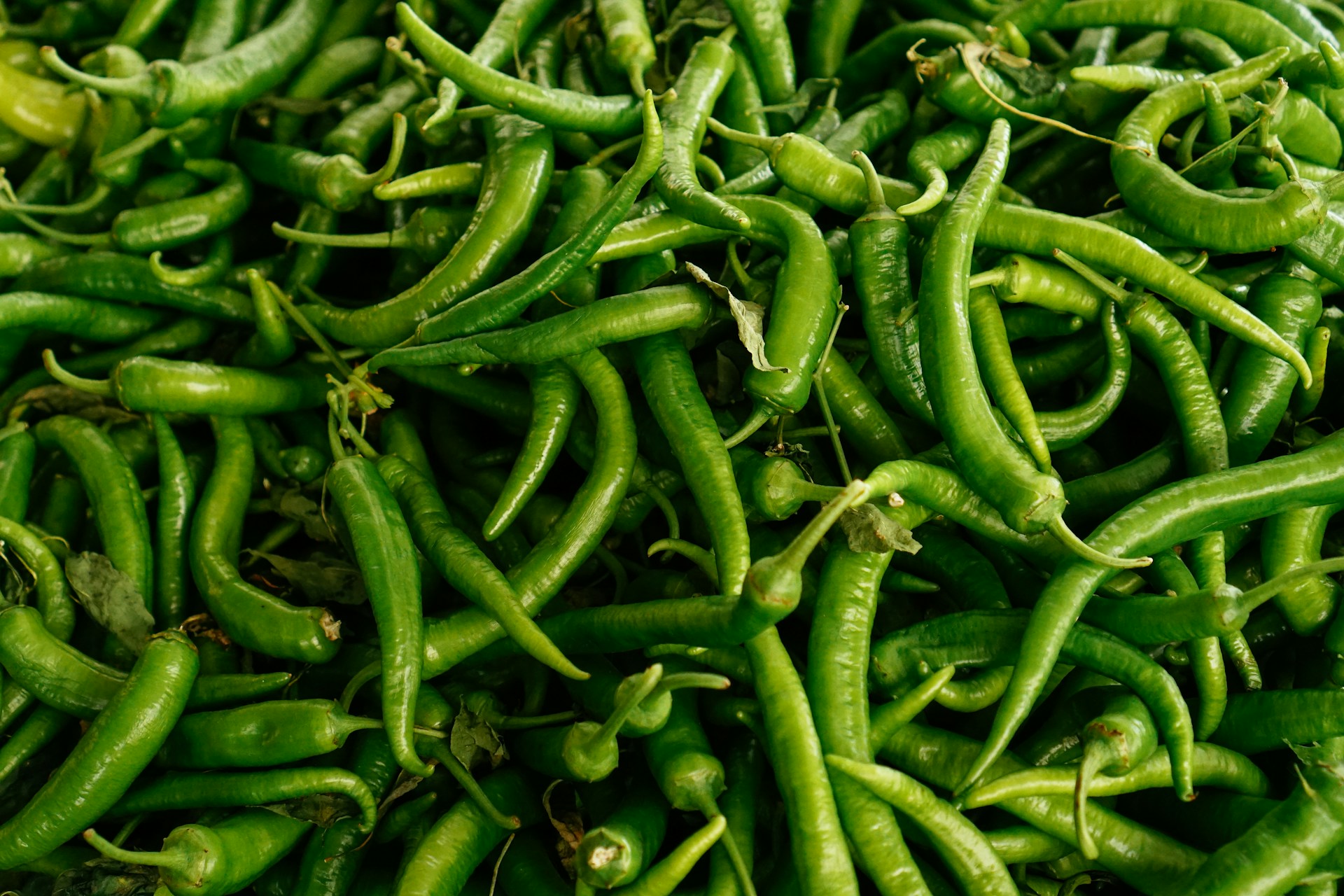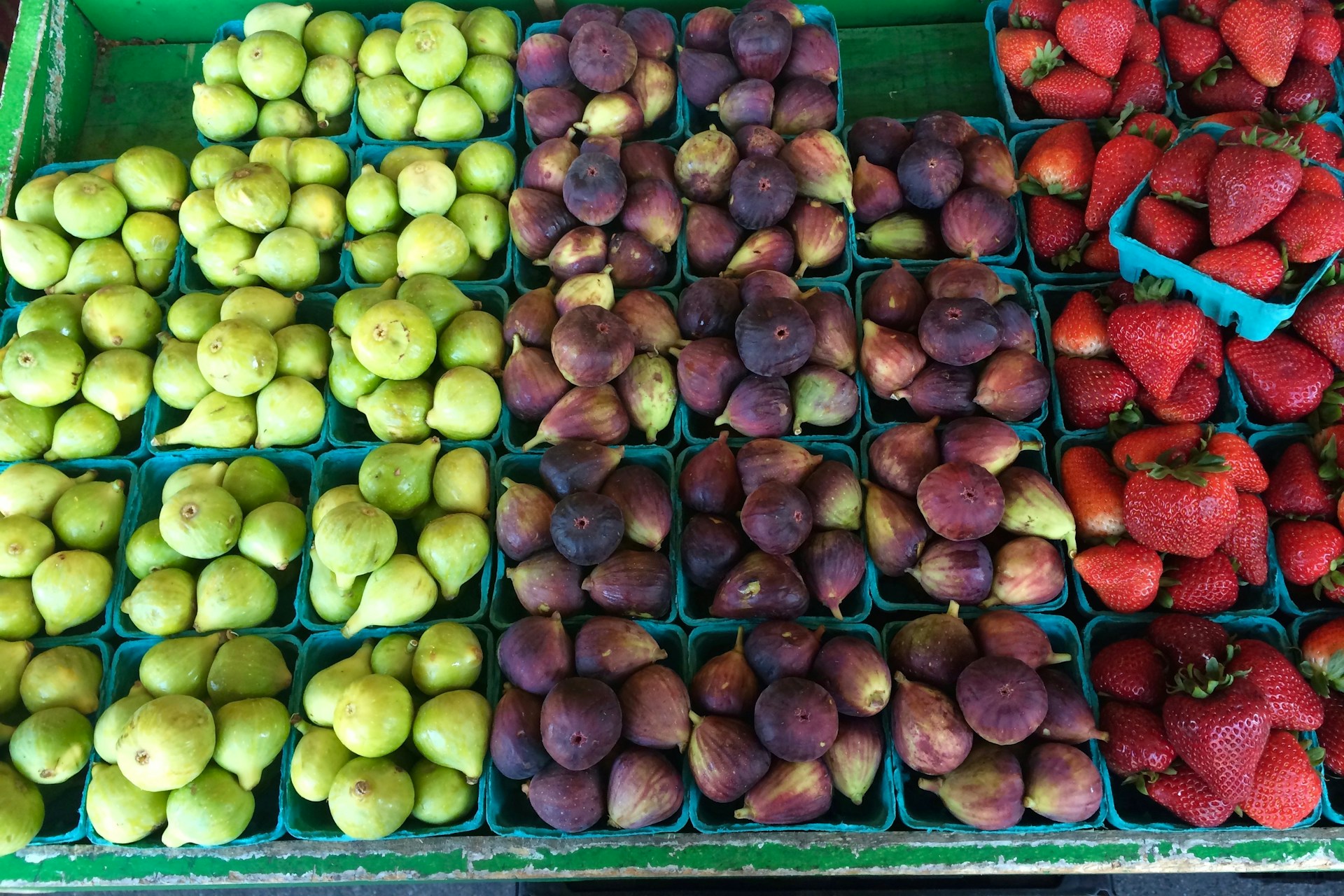In the realm of produce distribution, traditional forecasting methods are proving inadequate to accurately predict market trends and consumer behaviors.
Advanced statistical models and predictive analytics are emerging as indispensable tools in reshaping the future of this industry.
Recent technological advancements have made these new strategies possible and remarkably precise.
These innovative ways of forecasting provide a competitive edge and have the potential to revolutionize the supply chains.
In this article, we will delve into the nuances of how these models are transforming the traditional landscape of produce distribution.
We will explore various case studies to exemplify this paradigm shift, highlighting the benefits and challenges it brings.
Contents
- Models Changing Produce Distribution Forecasting
- 1. Predictive Analytics Models for Agricultural Supply Chains
- 2. Machine Learning Models for Crop Yield Forecasting
- 3. AI Models for Freight Volume Prediction
- 4. Data Mining Models for Price Fluctuation Analysis
- 5. Neural Network Models for Demand Forecasting
- 6. Real-Time Inventory Management Using IoT Models.
- 7. Statistical Models for Seasonal Produce Forecasting
- The Bottom Line
Models Changing Produce Distribution Forecasting
1. Predictive Analytics Models for Agricultural Supply Chains
Predictive analytics for agricultural supply chains employs advanced technologies to forecast crop output, demand, and price variations, and can be a game changer in produce distribution forecasting.
These models leverage historical data and sophisticated algorithms to predict future events, allowing stakeholders to take informed decisions about planting, harvesting, storing, and selling crops.
Examples of data commonly used in these models include soil type, weather patterns, pest infestations, disease outbreaks, historical yield data, and market trends.
Predictive analytics helps reduce the uncertainty farmers face in terms of changing weather conditions or sudden disease outbreaks, which can severely affect crop yields.
Furthermore, it enables supply chain managers to optimize resource allocation, reduce waste, and improve the efficiency of the supply chain.
This technology can also help combat pressing issues like global food shortages by allowing farmers to accurately predict crop yields and consequently plan their cultivation cycles more effectively.
These models also have the potential to significantly influence pricing in agricultural markets by providing reliable forecasts of supply and demand trends.
Moreover, they could play a crucial role in shaping government policies, as accurate forecasts of crop output can assist in making informed decisions about import-export policies, tariff rates, and subsidies.
Predictive analytics models for agricultural supply chains are particularly useful, considering the global climate change and its impact on agriculture, as farmers need to adapt their farming practices to these rapidly changing conditions.
These models can help agricultural organizations in making sound investment decisions by offering precise predictions about future outcomes.
Moreover, the ability to accurately predict crop yield and market demand can help reduce risk in agricultural investment, thereby attracting more investors and stakeholders to the sector.
Through predictive analytics, all stakeholders in the supply chain – from farmers to retailers – can gain actionable insights and forecasts that can streamline the supply chain and improve overall productivity.
The widespread use of these robust predictive analytics models for agricultural supply chains can revolutionize the way we understand agricultural production and distribution.
However, it’s crucial to keep improving the accuracy and reliability of these models to truly unlock their potential and achieve the goal of sustainable agriculture.
The ultimate goal should be to develop comprehensive and accurate predictive models that not only forecast crop yield, but also take into account various socio-economic factors influencing agricultural supply chains.
Finally, predictive analytics, a cornerstone technology of the Fourth Industrial Revolution, has the potential to usher in a new era of precision agriculture, where all farming activities are data-driven and optimized for efficiency and sustainability.
2. Machine Learning Models for Crop Yield Forecasting
As part of advancements in technology, the field of agriculture is experiencing significant transformations in the way it operates, particularly in crop yield forecasting.
An efficient tool that is increasingly being implemented in this sector is the use of Machine Learning (ML) models for crop yield prediction.
These tools are computer programs designed to utilize substantial amounts of data to perfect their forecasting abilities, enabling them to provide highly accurate predictions on future crop yields.
MACHINE LEARNING MODELS HAVE THE CAPABILITY TO ACQUIRE KNOWLEDGE FROM THE DATA AND EFFECTIVELY APPLY THIS UNDERSTANDING TO PREDICT PARTICULAR OUTCOMES SUCH AS CROP YIELDS
The accuracy of ML models is reliant on the quality of initial data feeding into the system, the better the input data, the more accurate the produced predictions will be.
The benefits of using these ML models include reduced costs, improved efficiencies, and a greater capacity for decision-making processes.
Producers can thus plan yield volume ahead of their harvesting schedules, procure resources, and manage risks more effectively by leveraging these insightful predictions.
The use of ML models in crop yield forecasting can facilitate efficient produce distribution across the supply chain.
Incorporating ML models for crop yield prediction allows for stronger inventory management, where overstocks and shortages can be effectively managed or even eliminated.
For instance, with an accurate forecast of a high yield for a particular crop, distributors can arrange for transport and storage facilities well in advance, maximizing efficiency and minimizing waste.
This anticipatory management of resources is a key aspect of strategic planning in agricultural supply chains.
The implementation of ML models are providing sustainability by reducing the wastes and losses in the agricultural industry.
A crucial advantage that ML models offer is their capability of predicting the effect of known variables such as weather, soil conditions, and crop disease factors, over the crop production yields.
Thus, the move towards adopting ML models for crop yield forecasting can significantly improve produce distribution and overall farm management.
Machine Learning models represent the next generation solution for the agriculture industry, enhancing accuracy, improving efficiencies, and reshaping the way crop production and distribution is managed.
3. AI Models for Freight Volume Prediction
The world of produce distribution is becoming increasingly reliant on advanced predictive models.
One such technology at the forefront of this evolution is Artificial Intelligence (AI).
AI’s ability to process large quantities of data quickly, accurately, and efficiently makes it a vital tool for an industry that deals with a vast, constantly changing marketplace.
AI models are particularly effective at predicting freight volumes, a critical component of successful produce distribution.
Freight volume prediction involves determining the quantity of produce that will be transported from production sites to distribution centers and various sales points.
Getting this estimation right is crucial because ineffective freight volume prediction can lead to major losses.
It can cause overstocking, which results in wasted produce and lost profits, or understocking, which leads to missed sales opportunities and customer dissatisfaction.
Traditionally, freight volume prediction has heavily relied on human intuition and experience.
However, as with any human-dependent operation, it has its limitations and is prone to errors.
The predictions can also be influenced by bias and could possibly lack the exactness required in today’s supply chain operations.
The adoption of AI in this area can significantly reduce these limitations.
Using historical data such as previous sales records, weather conditions, market trends, seasonal patterns, and other relevant factors, AI can generate accurate, reliable forecasts.
AI models, which are based on machine learning algorithms, can self-improve, learning from past mistakes and refining their predictions as they process more and more data.
This ability to “learn” and “improve” makes them exceptionally valuable for predicting freight volumes in the ever-changing produce distribution landscape.
Furthermore, these models can analyze and interpret complex patterns in data that might elude human analysts, thus providing deeper insights.
Consequently, AI models for freight volume prediction can significantly improve efficiency, reduce losses, and enhance overall supply chain performance in produce distribution.
Indeed, their application marks a monumental shift from traditional forecasting methods, illustrating how modern predictive models are changing produce distribution forecasting.
4. Data Mining Models for Price Fluctuation Analysis
Data mining models provide vital assistance in the analysis and forecasting of price fluctuations in the agricultural sector.
These models utilize sophisticated algorithms that examine large data sets, identifying patterns that are often missed by traditional forecasting methods.
Being able to accurately forecast price fluctuations has a major influence on strategic decisions within the supply chain, from production to distribution.
Greater accuracy in predicting fluctuations can result in reduced waste, improved fulfillment, and enhanced profitability.
Advanced data mining techniques can analyze numerous variables simultaneously, considering factors such as weather patterns, disease outbreaks, policy changes, and global market trends when predicting price fluctuations.
Many data mining models use time-series analysis, which enables them to predict future prices based on historical data.
This time-series analysis is especially beneficial in seasonal industries, such as agriculture, where prices can significantly fluctuate based on the time of year.
Data mining models also include machine learning algorithms, which learn from experience and improve their predictions over time.
This machine learning aspect adds a dynamic component to the models, allowing them to adapt to changing market conditions and improve with each prediction iteration.
For these data mining models to be effective, it’s crucial that they are trained on high-quality, relevant data.
Data quality is paramount, errors or inconsistencies in the data can lead to inaccurate predictions, potentially resulting in financial loss.
The selection and the preprocessing of data are critical steps in developing a reliable data mining model for price fluctuation analysis.
Through the integration of data mining models with other technologies, such as Internet of Things (IoT) and Artificial Intelligence (AI), the predictive power of these models can be significantly augmented.
IoT devices can feed real-time data into the model, allowing for more accurate and timely price predictions.
AI can further enhance the model by using natural language processing to analyze news articles and social media posts, which could provide valuable insights into potential market shifts.
In the end, the ultimate aim of data mining models for price fluctuation analysis is to provide stakeholders in the agricultural supply chain with actionable insights to better manage their operations and mitigate risks.
5. Neural Network Models for Demand Forecasting
The field of demand forecasting has witnessed substantial advancements over the years, and one key player responsible for this progression is the introduction of Neural Network Models.
Neural Network Models work by creating intricate interconnections of artificial neurons that mimic the human brain’s functionality, enabling complex problem-solving.
These models’ primary strength lies in their ability to learn from historical data, identify patterns, minimize errors in prediction, and adapt to new changes dynamically.
When applied to demand forecasting in produce distribution, Neural Network Models can consider multiple factors including past demand patterns, seasonality, price changes, and even weather conditions that may influence crop yields.
The results are forecasts that are highly accurate and that can guide decisions regarding production quantities, order timings, and pricing strategies.
This accuracy in demand forecasting has the potential to reduce waste, optimize resources, and ultimately contribute to increased efficiency and profitability in the produce distribution sector.
Moreover, with ongoing refinement, these models can continue improving predictions over time, a crucial advantage in an industry where variability is a constant.
One interesting aspect of Neural Network Models is their capacity to handle non-linear relationships between variables, a common occurrence in demand forecasting.
This non-linearity arises due to complex interdependencies between demand, supply, prices, and external factors, all of which these models can integrate effectively within demand forecasting.
While these models can be computationally intensive, the trade-off comes with the advantage of more robust and accurate forecasts.
The rise in accessible computing power and decreased costs of data storage have also made it more feasible to use Neural Network Models in practice.
Despite the complexity, many tools and software platforms now offer user-friendly interfaces for designing and training these models, making them more accessible to businesses.
Implementation in produce distribution forecasting involves careful selection of network architecture, input variables, and training facilities, ensuring that models are tuned to the unique challenges and patterns of this sector.
In essence, Neural Network Models bring together various data points and layers of complexity to generate comprehensive and reliable forecasts of product demand.
Their ability to learn and adapt over time makes them a transformative tool in produce distribution forecasting, enhancing accuracy and operational efficiency.
By leveraging the power of Neural Network Models, businesses can strive towards more sustainable and efficient operations, bolstering their growth and competitiveness in the marketplace.
6. Real-Time Inventory Management Using IoT Models.
Inventory management, in particular, in real-time, has a profound impact on the overall produce distribution forecasting process.
Due to the perishability of the products, an efficient inventory management system is critical in agriculture supply chains.
One of the innovative models that is transforming this area is the usage of IoT (Internet of Things) in real-time inventory management.
This model leverages the usage of sensors and RFID (Radio Frequency Identification) tags to monitor the state of the inventories.
When implemented correctly, the IoT models can significantly improve the accuracy of inventory data, cut down waste, and boost the overall efficiency of the supply chain process.
The sensors provide real-time updates on various factors such as temperature, humidity, and even the ripeness of the produce.
This information is crucial for distributors as they can make informed decisions regarding transportation, storage, and distribution of the perishable products.
Furthermore, the data from the IoT devices can be input into machine learning or predictive analytics models to enhance the forecasting accuracy even further.
In addition to tracking the physical state of the produce, IoT models can also help in tracking the quantity of the inventory in real-time.
Through RFID tags, each item in the inventory can be accounted for, providing an accurate measure of what’s in stock and what’s out of stock, greatly reducing chances of overstocking or understocking.
The real-time visibility of the inventory situation also helps in making dynamic adjustments to the distribution plans, ensuring that the supply always meets the demand.
Such an inventory management model ensures there is a continuous flow of products from the field to the end-users without significant delays or losses.
This real-time model also helps in quick decision-making during unforeseen circumstances like sudden changes in demand or supply.
For instance, if a particular type of produce is running low in stock and is high in demand, the system would instantly flag such information, prompting early replenishment actions.
Hence, the integration of IoT models into the real-time inventory management can significantly transform the produce distribution forecasting in the agricultural sector.
7. Statistical Models for Seasonal Produce Forecasting
Seasonal produce forecasting is an impactful realm where statistical models play a significant role.
This statistical approach provides robust and highly predictive models, making it indispensable for agricultural supply chains.
One of the most commonly utilised models in seasonal forecasting is the time series analysis.
Using historical data, this model is capable of identifying patterns and trends that can provide accurate forecasts for future seasonal production rates.
Through the use of patterns such as seasonality and cyclicality, time series analysis anticipates fluctuations in product availability.
The AutoRegressive Integrated Moving Average (ARIMA) is another commonly employed statistical model for this purpose.
ARIMA excels in its ability to handle data with a trend, or a time-varying mean, making it ideal for trending agricultural data.
The addition of seasonal components to ARIMA, giving rise to the Seasonal ARIMA or SARIMA, further bolifies its applications in seasonal produce forecasting.
Employing seasoned statistical models allows for more informed strategic decisions like planting planning, pricing, and distribution.
The Exponential Smoothing (ETS) model is another statistical tool frequently used in forecasting seasonal produce.
This method excels at capturing seasonality within data, and can handle various types of data trends, lending to its high accuracy in forecasting.
Utilization of these myriad statistical models can greatly reduce the risk associated with agricultural practices and aid in the effective planning of distribution and supply chains.
Despite their numerous benefits, it is important to keep in mind that the accuracy of these models relies heavily on the quality and comprehensiveness of the data being fed into them.
Therefore, maintaining consistent and reliable data collection channels remains a critical aspect of ensuring the efficacy of statistical models in seasonal produce forecasting.
As technology advances, new statistical models with promising potential, such as Bayesian time series models, are emerging and being applied to seasonal produce forecasting.
Therefore, continuous research and development in these statistical models is an ongoing necessity for enhancing accuracy and reliability in produce distribution forecasting.
The Bottom Line
Artificial Intelligence has emerged as an important tool in revolutionizing agricultural supply chains, primarily through leveraging predictive analytics, machine learning, data mining and neural networks to forecast crop yields, freight volumes, price fluctuations and demand respectively.
In addition, Internet of Things-based models have been instrumental for real-time inventory management, ensuring farm-to-table freshness and reducing waste.
Seasonal produce forecasting has also witnessed significant enhancements through the use of advanced statistical models.
Ultimately, these technological advancements have made agricultural supply chains more efficient, sustainable and resilient, offering a promising solution towards addressing food security challenges of the future.




